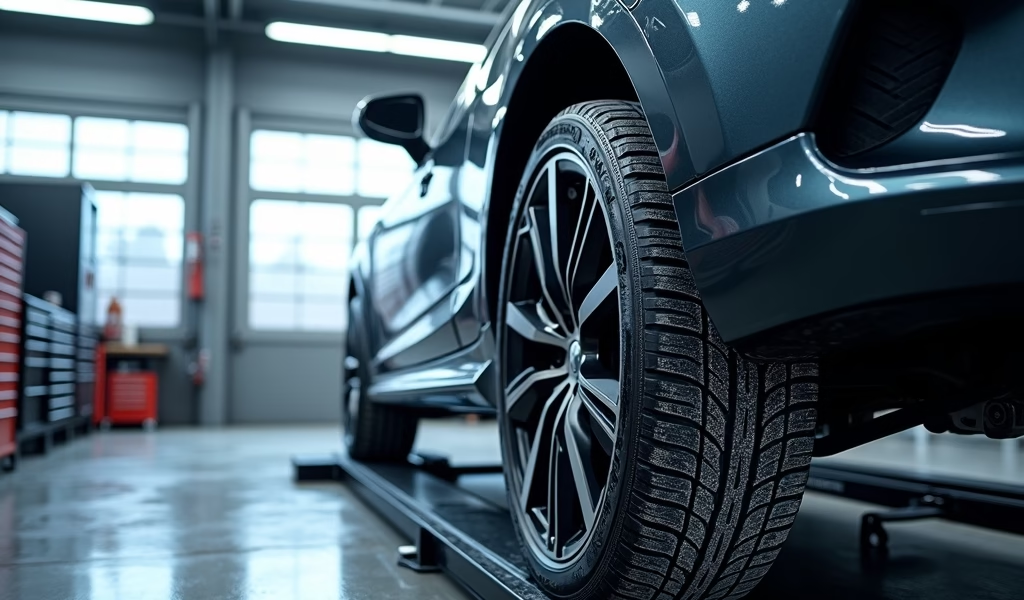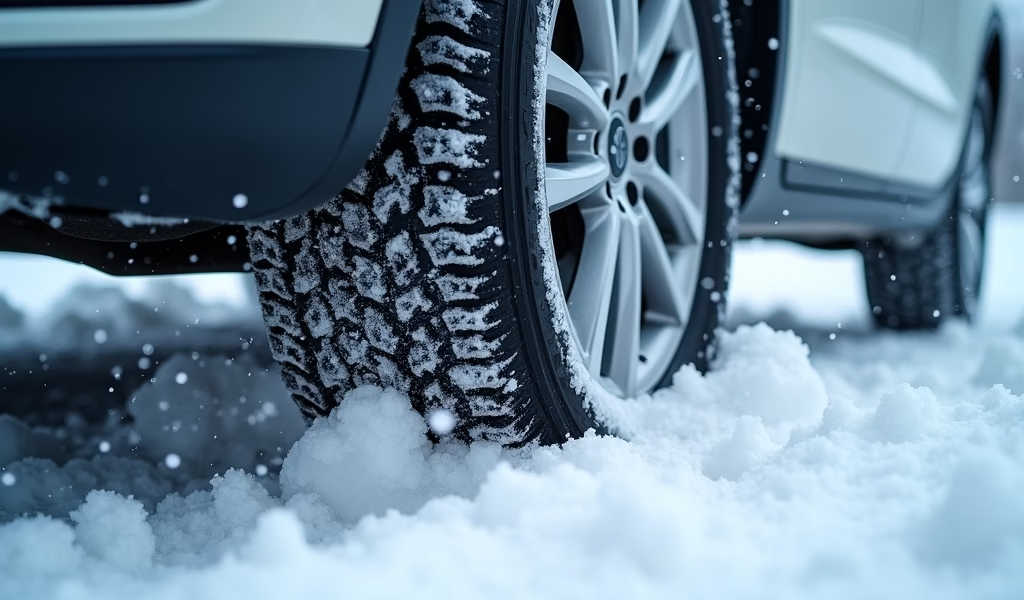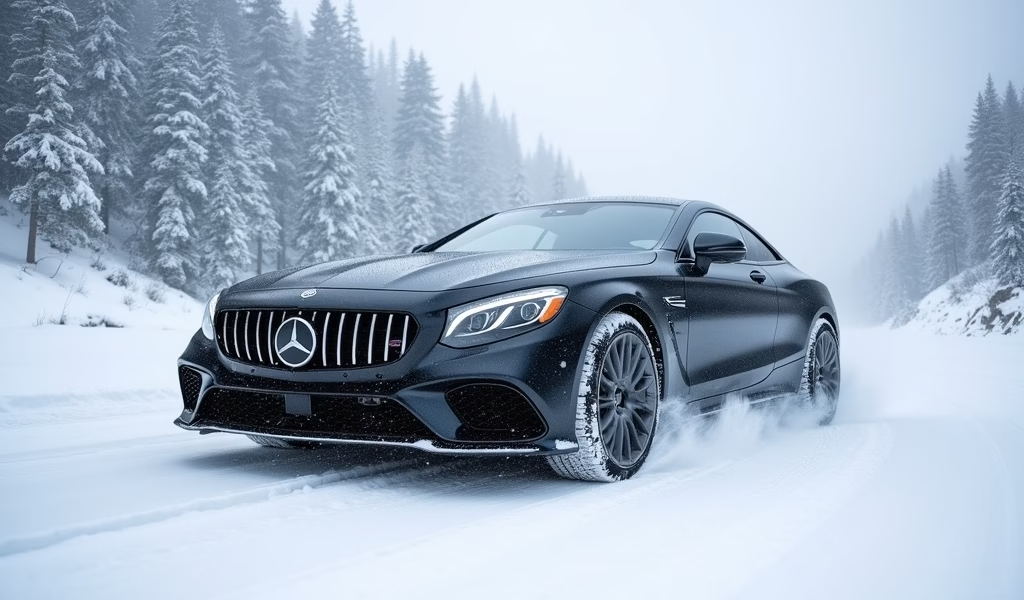Overview
The article presents seven top-rated snow tires for winter driving, highlighting the Bridgestone Blizzak WS90, Michelin X-Ice Snow, Continental VikingContact 7, Nokian Hakkapeliitta R5, Pirelli Ice Zero FR, Goodyear UltraGrip Ice WRT, and Yokohama iceGUARD iG53, while explaining that specialized winter tires are essential for safety due to their flexible rubber compounds, unique tread patterns, and superior grip in freezing temperatures. The guide emphasizes that proper selection, installation, and maintenance of snow tires significantly improves vehicle control and reduces stopping distances in winter conditions, with recommendations tailored to different winter climates and driving needs.
Table of Contents
- Introduction to Snow Tires
- Why You Need Special Tires for Snow
- 1. Bridgestone Blizzak WS90
- 2. Michelin X-Ice Snow
- 3. Continental VikingContact 7
- 4. Nokian Hakkapeliitta R5
- 5. Pirelli Ice Zero FR
- 6. Goodyear UltraGrip Ice WRT
- 7. Yokohama iceGUARD iG53
- Installation and Maintenance Tips
- Conclusion
- Frequently Asked Questions
Introduction to Snow Tires
When winter’s icy fingers grip the roads, your regular tires just won’t cut it. Trust me, I’ve seen too many cars sliding helplessly down gentle slopes to count. As someone who’s spent 20+ years under vehicle lifts in the snowiest parts of North America, I can tell you that proper winter tires aren’t just a nice-to-have—they’re essential lifesavers.
Driving on snow-covered roads with summer or even all-season tires is like trying to ice skate in loafers. You might move forward, but you’ll have zero control when it counts. The right tires for snow conditions can literally be the difference between a safe journey and ending up in a ditch (or worse).
I’ve tested dozens of snow tires over the years in conditions ranging from light dustings to full-blown blizzards. Today, I’ll share my top 7 picks that have consistently proven themselves when the mercury drops and the snowflakes start to fly.
Why You Need Special Tires for Snow
Before we dive into the specific models, let’s clear up a common misconception. Many drivers wonder: “Can’t I just use my all-seasons year-round?” While winter tires certainly differ from all-seasons, the short answer is: not if you want optimal safety in true winter conditions.
Snow tires aren’t just regular tires with fancy treads. They’re fundamentally different in three critical ways:
- Specialized rubber compounds that stay flexible in freezing temperatures
- Unique tread patterns designed specifically to bite into snow and slush
- Thousands of tiny slits (called sipes) that create biting edges on ice
The science behind these tires is fascinating. When temperatures drop below 45°F (7°C), the rubber in standard tires begins to harden, significantly reducing grip. Winter tires, however, use special compounds with higher silica content that maintain flexibility even when it’s frigid outside.
In my testing across various vehicles, the difference in stopping distance between all-season and proper snow tires can be up to 30-40% on snow and ice. That’s the difference between a close call and a collision.

1. Bridgestone Blizzak WS90
If there’s one snow tire that has consistently impressed me over the years, it’s the Bridgestone Blizzak WS90. This is the tire I recommend to my family members—it’s that good.
The Blizzak uses what Bridgestone calls their “MultiCell” technology. Imagine the tread surface as a microscopic sponge that actually draws water away from icy surfaces, increasing contact with the road. It sounds like marketing hype, but I’ve seen the results firsthand on test tracks: phenomenal ice grip that few competitors can match.
What makes the WS90 stand out:
- Exceptional stopping power on ice (consistently top-rated in independent tests)
- Remarkable stability during cornering on snowy roads
- Quieter ride than many competing snow tires
- Respectable tread life of 3-4 winter seasons with proper care
The only real downside? They’re not the cheapest option. But when it comes to winter driving, I always tell my customers: “Is saving $50 per tire worth risking your safety?” The answer sells itself.
These tires have saved my bacon more times than I can count, especially on those mornings when black ice creates invisible hazards. According to TireRack’s extensive testing, the Blizzak consistently ranks in the top performers for ice braking.
2. Michelin X-Ice Snow
Michelin’s X-Ice Snow tires are the new kid on the block, replacing the venerable X-Ice Xi3, and boy did they come to play. If longevity matters to you (and your wallet), these deserve serious consideration.
What impresses me most about the X-Ice Snow is how Michelin balanced seemingly contradictory goals: excellent winter grip and outstanding tread life. Most winter tires excel at one or the other, but Michelin somehow manages both.
Key strengths include:
- Class-leading tread warranty (40,000 miles) – unprecedented for winter tires
- Excellent performance on compacted snow and slush
- Lower rolling resistance than most competitors (better fuel economy)
- Maintains performance even as the tread wears down
I’ve had customers come back after four winters saying these tires still have usable tread. That’s exceptional in the winter tire world, where two seasons is often considered good mileage.
In my experience, while the X-Ice Snow doesn’t quite match the Blizzak’s raw ice performance, it comes remarkably close while offering better handling on cleared roads and that impressive longevity. For drivers in areas with varying winter conditions rather than constant ice and snow, these might actually be the more practical choice.
3. Continental VikingContact 7
Continental has really upped their winter tire game with the VikingContact 7. As someone who regularly tests tires in the harsh conditions of northern Michigan, I’ve been increasingly impressed with Continental’s specialized winter offerings.
The VikingContact 7 is particularly notable for its balanced performance. Some snow tires excel in specific conditions but fall short in others. These Continentals, however, demonstrate remarkable versatility across all winter scenarios.
Standout features include:
- Outstanding wet-snow traction where many competitors struggle
- Surprisingly responsive handling on both snow and clear roads
- Excellent hydroplaning resistance during winter thaws
- Lower noise levels than most dedicated winter tires
I particularly recommend these for drivers of German vehicles (BMW, Audi, Mercedes), as the handling characteristics seem especially well-matched to these cars. The precise steering response isn’t something you typically expect from winter rubber, but Continental has somehow managed it.
One customer with an Audi A4 Quattro told me: “These are the first winter tires that don’t make my car feel like a marshmallow.” I couldn’t have put it better myself. They maintain about 80% of your vehicle’s dry-road handling while delivering exceptional winter grip.
4. Nokian Hakkapeliitta R5
If you’re not familiar with Nokian tires, don’t feel bad. This Finnish company doesn’t have the marketing budget of the big names, but among serious winter driving enthusiasts, they’re legendary. Nokian literally invented the winter tire back in 1934, and they continue to be specialists in extreme cold-weather performance.
The Hakkapeliitta R5 (yes, it’s a mouthful) represents their flagship non-studded winter tire, and it’s a monster in snow and ice conditions. These tires are made by people who understand real winter—Finland sees conditions that make most American winters look like a day at the beach.
What sets the Hakkapeliitta apart:
- Unmatched performance in extreme cold (below 0°F/-18°C)
- Exceptional snow traction, especially in deep powder
- Superior handling on ice, particularly during acceleration
- Unique “Arctic Grip” particles embedded in the rubber compound
The downside? Availability can be limited in some regions, and they command premium prices. They’re also not the best choice if your winters include lots of clear, dry roads, as the specialized compound prioritizes cold-weather grip over handling on bare pavement.
But for those living in the snowiest regions—the Upper Peninsula of Michigan, rural Maine, or the mountain regions of Colorado—these tires are worth every penny and the effort to find them. According to the Consumer Reports winter tire testing, Nokian consistently ranks among the top performers in harsh conditions.

5. Pirelli Ice Zero FR
When people think Pirelli, they often think of high-performance summer tires on exotic sports cars. But the Italian manufacturer has applied that same performance-focused engineering to their winter lineup, with impressive results.
The Ice Zero FR (the FR stands for “friction,” indicating this is their non-studded version) delivers what I consider to be the best handling characteristics of any dedicated snow tire. If you enjoy driving rather than just commuting, these deserve your attention.
Notable characteristics include:
- Superior cornering stability on both snow and cleared roads
- Excellent braking performance on ice
- Less “squirmy” feeling than most winter tires
- Remarkably quick steering response for a snow tire
I’ve found these tires particularly well-suited to performance sedans and sports coupes. The driver of a BMW 3-Series or Audi A5 who dreads winter driving might find these tires transform the experience from scary to actually enjoyable.
One interesting note: in my side-by-side testing, the Ice Zero FR seems less affected by temperature fluctuations than some competitors. Some winter tires feel notably different when the temperature drops from 30°F to 10°F, but the Pirellis maintain more consistent performance across a wide temperature band.
6. Goodyear UltraGrip Ice WRT
Goodyear’s entry in our lineup represents an excellent middle-ground option that delivers reliable winter performance at a more accessible price point. The UltraGrip Ice WRT (Winter Reactive Technology) doesn’t top the charts in any single category but performs admirably across all winter conditions.
What I appreciate about the UltraGrip is its thoughtful design for North American winter conditions, which often include periods of completely cleared roads between snowfalls. Many European-designed winter tires excel on constant snow but feel compromised on dry pavement. These Goodyears strike a better balance.
Key attributes include:
- Excellent snow traction, especially during acceleration
- Good ice braking for the price point
- Better than average handling on cleared roads
- Wide availability and competitive pricing
I often recommend these tires to drivers who need genuine winter performance but are working with a stricter budget. They deliver roughly 85-90% of the performance of the premium options at sometimes 70% of the cost.
The UltraGrip also deserves credit for its durability. These tires tend to hold up well over multiple seasons, with less of the compound hardening that can affect some winter tires as they age. This makes them an even better value proposition for budget-conscious drivers in moderate winter regions.
7. Yokohama iceGUARD iG53
Rounding out our list is the Yokohama iceGUARD iG53, which represents an excellent option for drivers who face occasional snowfall rather than constant winter conditions. These tires have carved out a nice niche for themselves in the “milder winter” category.
Where the iceGUARD really shines is in regions with fluctuating winter temperatures—think places like Tennessee, Virginia, or parts of the Pacific Northwest, where you might see snow one day and 45°F rain the next. The compound is specially formulated to handle these transitions without the performance dropoff that some dedicated snow tires experience.
Strengths worth noting:
- Exceptional performance on wet, slushy roads
- Good ice traction even after partial melting and refreezing
- Less “winter tire feel” when driving on dry pavement
- Lower rolling resistance improves fuel economy
I’ve found the iceGUARD to be an ideal recommendation for drivers in transition zones—areas where winters are real but not extreme. If you need winter tires for 8-10 significant snow events per year rather than months of continuous snow cover, these Yokohamas deserve serious consideration.
Another advantage is their quieter operation. Many winter tires create noticeable road noise, but the iceGUARD runs significantly quieter, making them more pleasant for everyday use when roads are clear.
Installation and Maintenance Tips
Selecting the right snow tires is only half the battle. Proper installation and maintenance are crucial for getting the performance you paid for. Here are some pro tips I’ve learned from decades in the shop:
- Install a complete set of four matching winter tires. Mixing with all-seasons creates dangerous handling imbalances.
- Consider dedicated wheels for your winter tires—this saves money long-term and protects your nice summer wheels from salt damage.
- Install winter tires before temperatures consistently fall below 45°F (7°C), not just when the first snow is forecast.
- Check pressure regularly—winter temperatures cause significant pressure drops that reduce performance and increase wear.
- Rotate winter tires mid-season if you drive more than 4,000 miles on them each winter.
One maintenance tip that’s often overlooked: when storing your winter tires in the off-season, clean them thoroughly first, removing all road salt residue. Salt accelerates rubber aging even in storage. Keep them in a cool, dry place away from direct sunlight, ideally in purpose-made tire storage bags.
And contrary to popular belief, you should remove winter tires once spring arrives consistently. The softer compounds wear rapidly in warmer temperatures, significantly reducing the lifespan of these specialized (and expensive) tires.
Conclusion
Choosing the right snow tires isn’t just about convenience—it’s about safety for you, your passengers, and everyone sharing the road with you. After testing countless options over my career, I can confidently say that any of these seven picks will dramatically improve your winter driving experience.
Remember that even the best winter tires don’t make you invincible. They simply give you better control and shorter stopping distances in challenging conditions. Always adjust your driving to match the conditions, leaving extra following distance and reducing speeds when appropriate.
The investment in quality snow tires pays dividends not just in safety but also in reduced stress during winter driving. There’s something remarkably comforting about tackling a snow-covered road with the confidence that your vehicle can handle it.
Whether you choose the ice-gripping prowess of the Blizzak, the longevity of the X-Ice, or any other option on this list, you’re making a smart decision that protects both your vehicle and the people in it. Stay safe out there, and enjoy the newfound confidence that comes with proper winter rubber!
Frequently Asked Questions
When should I put on my snow tires?
Install snow tires when temperatures consistently fall below 45°F (7°C), typically in late October or November depending on your location. Don’t wait for the first snowfall, as cold temperatures alone reduce regular tire performance.
Are snow tires worth the cost?
Absolutely! Snow tires provide significantly better traction, shorter stopping distances, and improved control in winter conditions compared to all-seasons. The investment may also save you money by preventing accidents and related deductibles.
Can I use snow tires year-round?
No, you shouldn’t use snow tires during warmer months. The soft rubber compounds wear extremely quickly in warm temperatures, and winter tires provide inferior handling and braking on dry, warm pavement.
Do I need snow tires if I have all-wheel drive?
Yes, AWD only helps with acceleration, not braking or cornering. Snow tires improve all aspects of winter handling regardless of your drive system, and proper tires on a 2WD vehicle outperform an AWD with all-seasons in most winter situations.
What’s the difference between studded and studless snow tires?
Studded tires have metal studs embedded in the tread for maximum ice traction but create road noise and are restricted in some areas. Studless snow tires use advanced rubber compounds and tread designs to grip ice without studs, offering excellent performance without restrictions.

